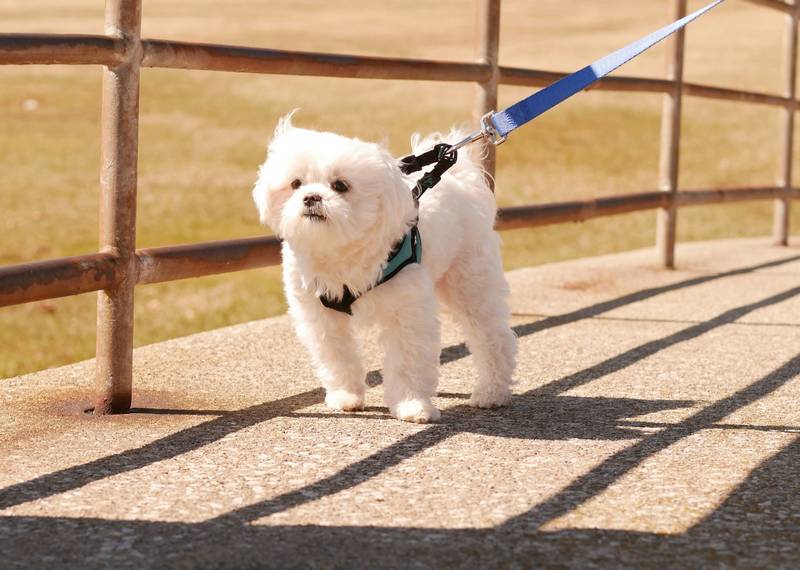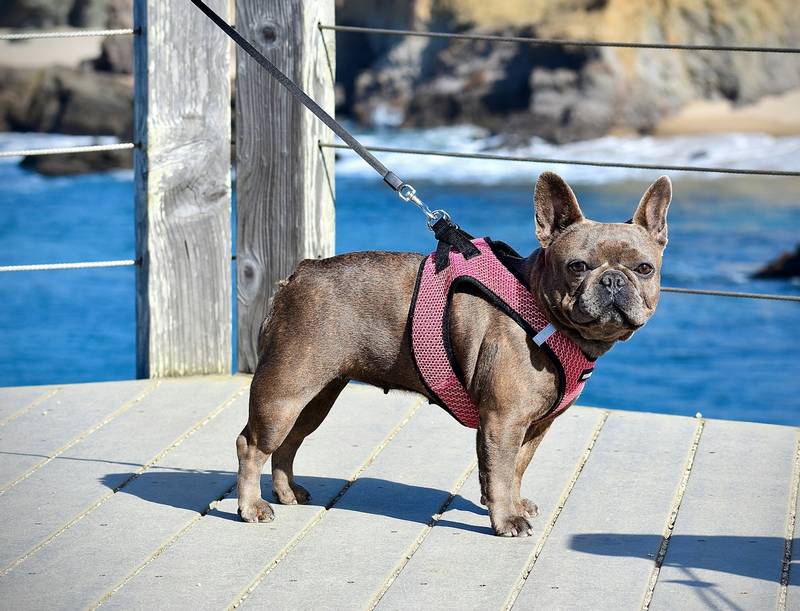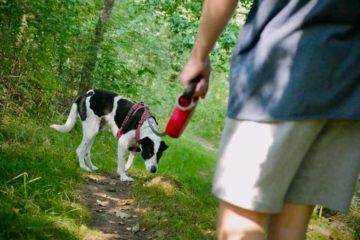How to Stop Dog From Pulling on Leash (+Why They Do It!)
Struggling with how to stop your dog from pulling on the leash, or dealing with a dog that pulls on the leash whenever you’re out for walks? It’s a challenge many dog owners face, but it’s definitely one that can be overcome with patience and consistent training.
In this article, we’ll delve into methods to prevent your dog from pulling on the leash, addressing common concerns like potential harm from pulling, leash biting, and how to manage leash pulling when other dogs are around. From young puppies to strong, large breeds, we’ll provide solutions to help you enjoy stress-free walks with your furry friend. Keep reading!
How to Stop Dog From Pulling on Leash

Stopping a dog from pulling on the leash is a common challenge faced by many of us. This behavior not only makes walks less enjoyable but can also lead to potential safety risks for both the dog and the owner. Effective training to encourage polite leash manners involves consistency, patience, and the use of positive reinforcement techniques.
Dog Pulling on the Leash: Can They Get Hurt?
Dogs can get hurt from pulling on the leash. Persistent pulling can lead to neck strain, injuries to the trachea, and other physical issues. It can also increase the risk of slipping out of their collar and running into dangerous situations.
Using a harness instead of a collar can help distribute the force more evenly across the body and reduce the risk of injury.
Dog Pulling Leash With Mouth
When a dog pulls the leash with their mouth, it often signifies playfulness or a desire to control the walk. This behavior can be redirected by teaching your dog to focus on you and by providing appropriate chew toys that satisfy their need to bite and tug.
Training commands that encourage focus and calmness can also be beneficial in redirecting this behavior.
How to Train a Dog Not to Pull on Leash
Training your dog not to pull on the leash involves several steps:
- Begin in a distraction-free environment to establish the basics of walking calmly on a leash.
- Use a short leash to keep your dog close and to give you more control over their movements.
- When your dog starts to pull, stop walking. Resume walking only when the leash is slack.
- Reward your dog with treats and praise for walking calmly by your side.
- Gradually introduce distractions as your dog becomes more comfortable with walking without pulling.
Consistency and positive reinforcement are key to successfully training your dog to walk calmly on a leash. Over time, with patience and practice, most dogs can learn to enjoy walks without pulling, making the experience safer and more enjoyable for everyone involved.
It’s important to remember, however, that the underlying behavioral issues (dominance, overexcitement, etc.) that were causing all of this to begin with will still be present. And until you address those, any positive changes you see will only be temporary.
“Well, how do I make these changes last?”
By getting your dog to truly choose to follow your direction, that’s how. I tried many times to write out how you can do that before deciding it made more sense to just link you to the free video series that explains it better than I’d ever be able to.
The series is by a man named Dan who is one of the world’s leading dog obedience trainers. In it, he teaches you how to put an end to things like your dog pulling the leash and all other misbehavior using his fast and easy-to-follow methods.
In the first video, Dan will reveal to you why the two most common methods of dog training only doom you to failure. You can watch the video now by clicking here. Follow the proven system he’ll show you in his series and you’ll never have to spend another second worrying about your dog pulling on the leash during walks ever again!
Dog Pulls on Leash When They See Other Dogs

When a dog pulls on the leash when they see other dogs, it’s often a sign of excitement, anxiety, or a lack of proper leash training. This behavior can make walks stressful and potentially dangerous. Understanding why your dog reacts this way and implementing consistent training strategies can help manage their response and ensure enjoyable, safe walks for both of you.
Dog Pulls on Leash and Chokes Themselves
A dog that pulls on the leash and chokes themselves is likely reacting out of excitement or fear, not understanding the consequences of their actions. This can lead to discomfort and even injury over time.
Using a no-pull harness can help prevent choking by distributing the pressure away from the neck, while positive reinforcement training teaches them to walk calmly. Learn the steps to do that by going back to the first section now.
Puppy Pulls on Leash and Bites It
When a puppy pulls on the leash and bites it, they may be treating the leash as a toy or experiencing frustration. This behavior can be mitigated by redirecting their attention with training exercises that focus on leash manners.
Offering a suitable chew toy before walks can also help satisfy their need to bite and chew, reducing their desire to grab the leash.
How to Get Large Dog to Stop Pulling on Leash
Getting a large dog to stop pulling on the leash requires patience, strength, and the right approach. Start with basic obedience training in a controlled environment to establish your command over the situation.
Use positive reinforcement to reward calm behavior and consider specialized training tools like a front-clip harness to discourage pulling by redirecting their movement. Additionally, practice walking in areas with fewer distractions to gradually accustom your dog to walking calmly, even when other dogs are present.
In conclusion, addressing leash pulling, especially when triggered by the sight of other dogs, involves understanding the root of the behavior and applying consistent, positive training methods. Whether your dog is large or small, young or old, the key is patience, proper equipment, and reinforcing good behavior.
With time and dedication, walks can become a pleasant activity for both you and your dog, free from stress and discomfort.
You’re probably ready to get started now that you have all of your questions about your dog pulling on the leash answered, so I’ll let you get going on things. Good luck, and thanks for checking out our article “How to Stop Dog From Pulling on Leash (+Why They Do It!)”.





